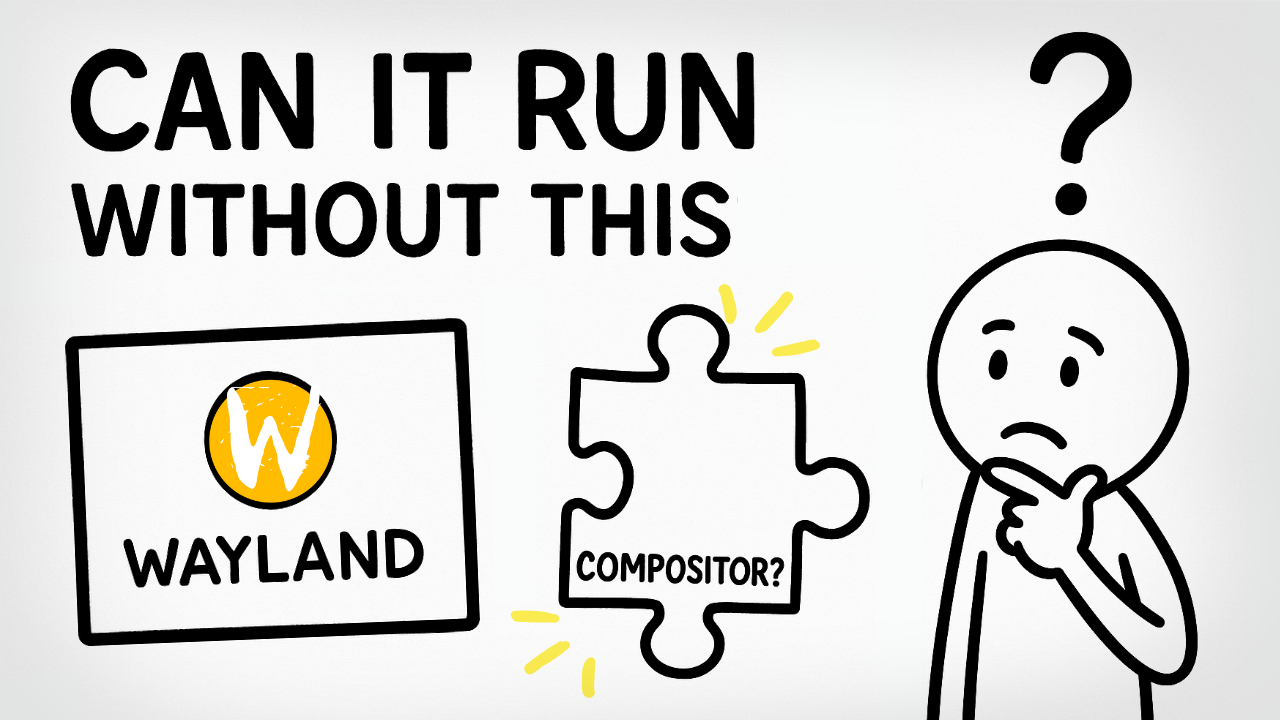I started my Linux journey on a distro that used Wayland by default.
At the time, I didn’t know what X11 even was, and honestly, I didn’t care. Everything just worked.
But then I started making videos about Wayland. And in doing so, I kept bumping into debates and strong opinions online.
Some people love Wayland. Others avoid it like the plague. And everyone seems to have something to say about compositors.
“Use Sway!”
“KWin handles fractional scaling better!”
“Wayland is too fragmented!”
“X11 is dead!”
“Long live X11!”
Honestly, I thought I understood the basic idea:
Wayland replaces X11. Cool.
But I quickly realized, I didn’t really know how Wayland worked.
And judging by the comments on one of my older videos, I’m not alone.
A Viewer Asked:
“Can Wayland run without a compositor?”
That question hit me.
Because, yeah—what is a compositor in the Wayland world?
The Short Answer: No, it can’t.
Wayland doesn’t do anything on its own. It’s not a program or a display server in the traditional sense.
It’s a protocol. A set of rules. A language for clients (your apps) to talk to the display server (the compositor).
In X11, you had:
– The X server, which handled drawing and input
– Optional: a window manager (to control window layout)
– Optional: a compositor (for effects like transparency)
In Wayland, the compositor does it all. It is the display server. And it also acts as a window manager.
Real-World Example: Fedora
Let’s say you install Fedora KDE Spin.
Out of the box, it uses KWin as the Wayland compositor. That’s your display server and window manager combined.
But let’s say you prefer a tiling window manager.
You can install Sway, a Wayland-compatible compositor modelled after i3.
Same protocol. Completely different experience.
That’s the magic (and sometimes the confusion) of Wayland.
Your experience depends on which compositor you choose.
So Why Is This Confusing?
Because Wayland’s minimalism is both its strength and its weakness.
It lets compositors decide how to implement features.
There’s no central authority saying, “Here’s how things must work.”
Which is great for innovation…
But tricky for consistency.
Final Thoughts
If you’re new to Linux, or even if you’ve been using it for a while, it’s totally normal to be confused by Wayland at first.
That’s why I made [this video] .
It’s not a deep technical dive, it’s a “here’s what confused me, and here’s what I figured out” kind of video.
Let me know if you’ve run into any other unresolved misunderstandings about Wayland, and I’ll try to make sense of them too.
Thanks for reading!
— Julia

Leave a Reply